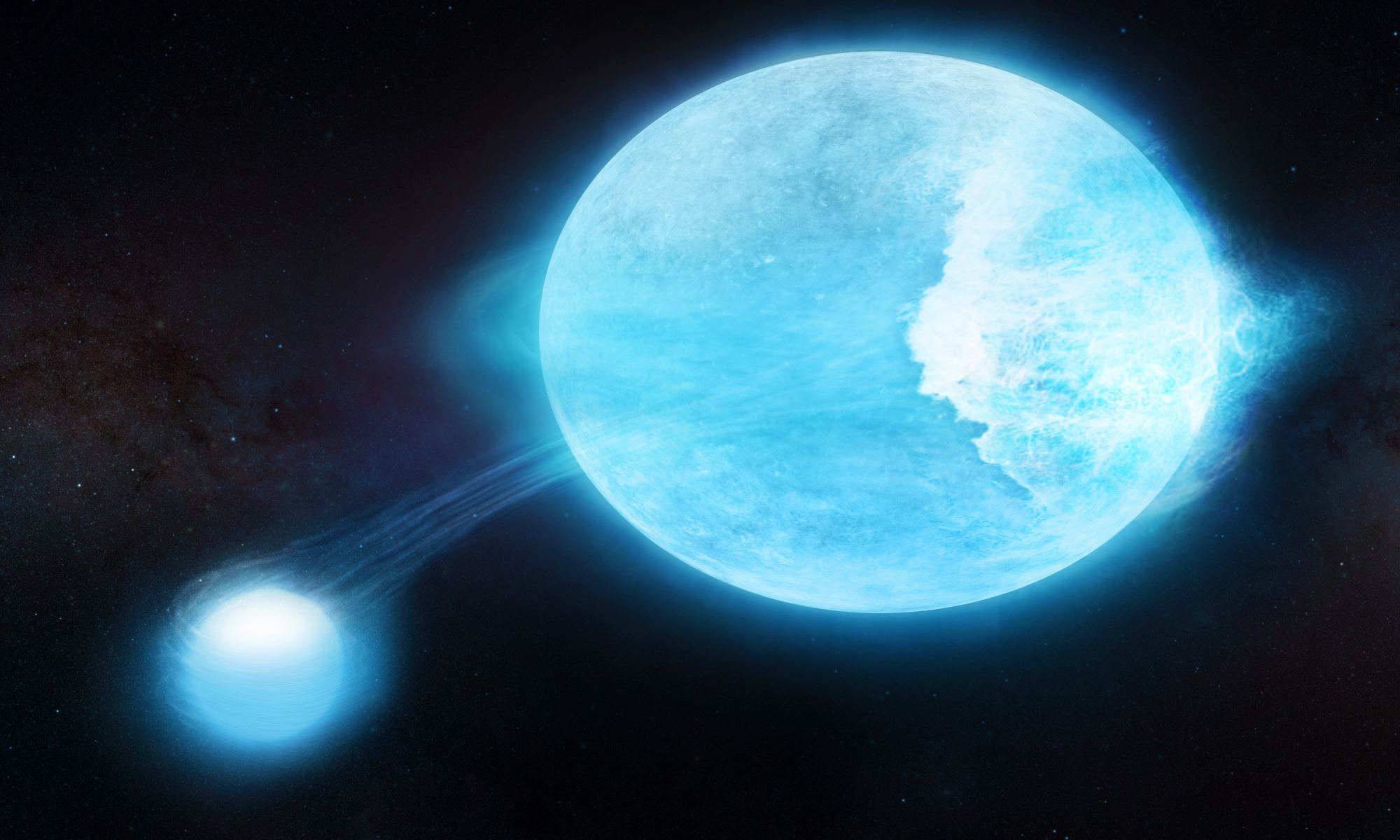Binary star systems often appear as variable stars. When we can’t see the individual stars because they are either too close together or too far away, we can see the gradual brightening and dimming of a single point of light as the stars orbit each other. Sometimes if the stars are particularly close when they pass each other they can brighten in unusual ways. One example of this is known as a heartbeat star.
They are called heartbeat stars because if you plot their brightness over time, the pattern, or light curve, looks like a heartbeat seen on an electrocardiogram. It’s the beeping pattern you see in movies and television to show a character is still alive. Heartbeat stars have such a pattern because the two stars have highly eccentric orbits. When they pass close to each other the tidal forces distort the stars into egg shapes, causing them to brighten. So you get a short spike in brightness like a heartbeat. We have several examples of heartbeat stars, but a recently discovered one is unusual even for a heartbeat star. Its peak brightness is 200 times greater than typical heartbeat stars, and its light curve has a rather unusual shape.

Known as MACHO 80.7443.1718, the primary star has a mass of 35 Suns, while the secondary star is just 16 solar masses. They orbit each other once every 33 days, and at their closest approach they are closer than Mercury is to the Sun. The strong tidal forces during close approach help explain why they brighten so significantly.
But there is an odd aspect to the light curve. Rather than having a simple spike of brightness, the stars dim a bit more slowly, and there is an oscillating decay to their light curve. To explain this, the team ran computer models of the stars during close approach, simulating not just the tidal forces between them, but also their fluid dynamics. They found a couple of interesting things.
The first is that during the nearest part of their orbit, some of the atmospheric material from the large star is captured by the smaller one. Many close binaries can exchange matter, but what is unusual in this case is that the exchange triggers oscillations in the primary star. As the companion swings by, waves form on the surface of the primary star. These waves then cascade along the surface. The primary star rotates on its axis with a period of four days, so we see the waves pass along the star every few days. This explains the wobbling decay of the light curve.
MACHO 80.7443.1718 is a great example of just how complex binary star interactions can be. The heartbeat of this binary system does more than affect its brightness, it stirs the pot a bit, which could change the way the stars evolve over time.
Reference: MacLeod, Morgan & Loeb, Abraham. “Breaking waves on the surface of the heartbeat star MACHO 80.7443.1718.” Nature Astronomy (2023).

